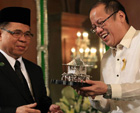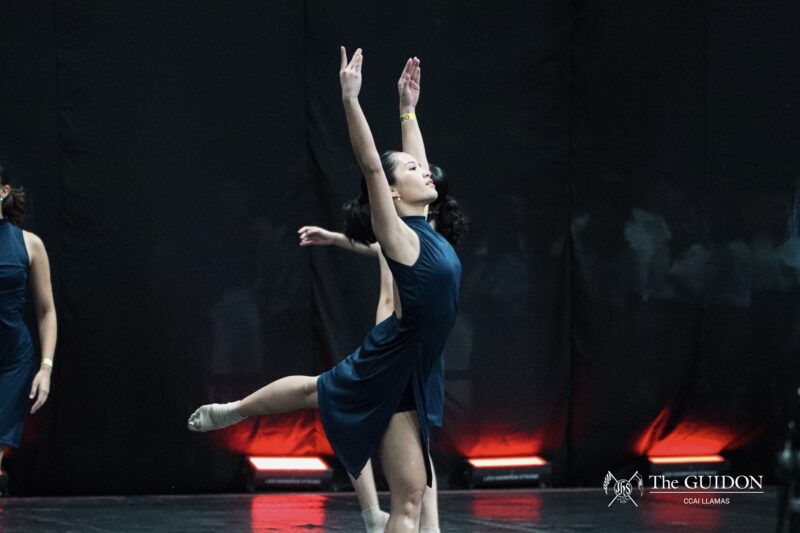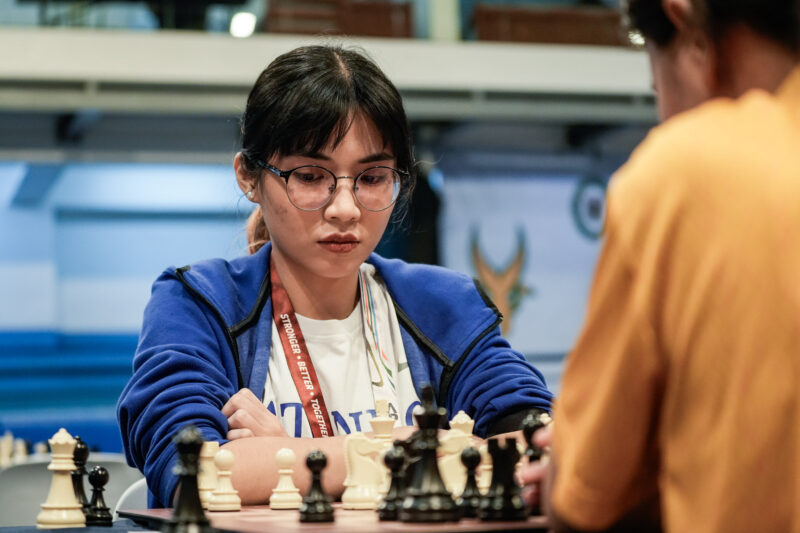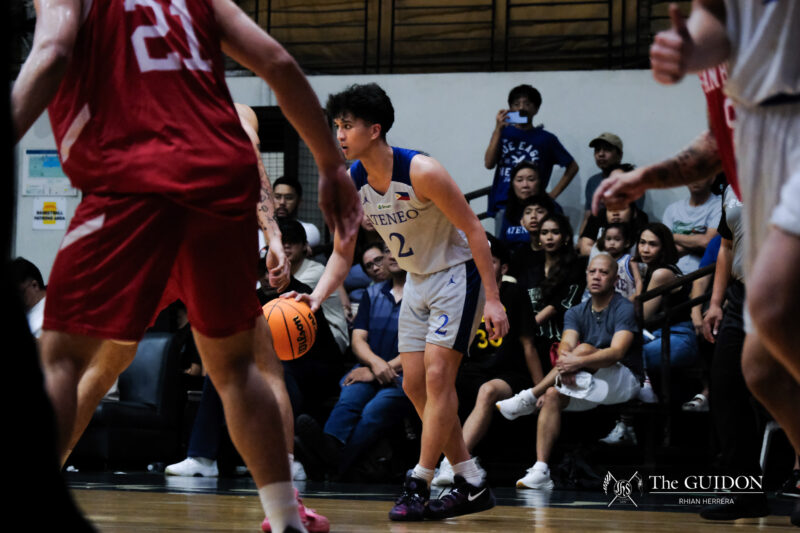BANGSAMORO MEANS “Moro Nation” or Morohood—as coined by the Americans before they transferred the governance of Muslim tribes to the Filipinos.
Anthropologist-historian Thomas McKenna1 elaborates, “American colonial policies had the effect of ethnicizing Muslim identity in the Philippines. By ‘ethnicizing’ Islam, it meant that American colonial rulers encouraged the development of a self-conscious Philippine Muslim identity among a generation of educated Muslim elites who were otherwise divided by significant linguistic, geographic, and, to some extent, cultural barriers.”2 The person especially responsible for influencing such policy was Arab-American Najeeb Saleeby who campaigned for the unification of Moro tribes during the pacification campaigns of 1900-1912. In his essay entitled “The Moro Problem,” Saleeby expressed early the need to unify all the Moro tribes so that the Moros can advance in “civilization and culture” to prepare them for integration into the body politic of the Philippines under the Americans. For Saleeby, the development of Morohood (Bangsamoro) could best be achieved if the Moros developed a sense of transcendent Muslim identity, making them understand that they, as “Moros,” are Muslims and that they belong to a larger community beyond their tribe.3 By ethnicizing the Muslim identity, it made “Moro” synonymous to “Muslim.”
A century later, Saleeby’s Bangsamoro is revisited in the Framework Agreement (FA) of 2012. Last October 7, President Benigno Aquino III announced on national television that an FA—a road map for establishing a new region has been reached by his government with the Moro Islamic Liberation Front (MILF). “This agreement creates a new political entity, and it deserves a name that symbolizes and honors the struggles of our forebears in Mindanao, and celebrates the history and character of that part of our nation. That name will be Bangsamoro,” he said. The historic signing a week later has paved the way for the creation of the Bangsamoro that will soon be realized in 2016.
“There is Bangsamoro, the place; there is Bangsamoro, the identity.” This is how Justice Marvic Leonen, then lead peace negotiator for the Philippine government, nuanced the Bangsamoro. This gives “Bangsamoro” a dual meaning: Bangsamoro referring to the new autonomous political entity (NAPE), and Bangsamoro as identity. But Bangsamoro as identity may not go easy for some traditionalist Muslims in the Philippines. I remember growing up in a family with a Muslim mother and a Catholic father. My mother, Rahma, would admonish us every time we called her a Moro. For Rahma, the term “Moro” does not reflect her true identity as a Muslim woman. She chose to be known only as a Muslim. Some Muslim traditionalists have concluded that Bangsamoro is not in any way different from Moro. They do not represent their core identity as Muslims. This is rightly so because Bangsamoro is not meant to be an exclusively Muslim identity. It is meant to be a collective identity of all its peoples—Muslims, Christians and Indigenous Peoples (IP).
The FA has defined Bangsamoro identity as “those at the time of conquest and colonization were considered natives or original inhabitants of Mindanao and the Sulu archipelago and its adjacent islands including Palawan, and their descendants…” (I.4) Nowhere in the FA does it say that the natives or original inhabitants were Muslims. In fact, before the colonial period not all inhabitants in Mindanao were Muslims. It is clear from the FA that the Bangsamoro identity is not exclusive to Muslims. Non-Muslims and other indigenous peoples (e.g. lumads) who wish to be identified as Bangsamoro are free to embrace it. However, if they choose otherwise, their rights are nonetheless respected.
In defining existing ethnic and religious identities within the Bangsamoro land, the FA is a welcome development. It recognizes and respects all religious affiliations and ethnicities, yet, the “Bangsamoro” unifies them as one broad collective identity for all those who embrace the Bangsamoro as home.
Bangsmoro as Filipino: A unification strategy
“We are Filipinos” was chief negotiator for the MILF Mohagher Iqbal’s response when then Secretary Marvic Leonen asked him if the playing of the national anthem would be all right for the leaders of the Moro Islamic Liberation Front (MILF). Leonen said he raised the question during talks with MILF leaders in Kuala Lumpur, Malaysia, prior to the October 15 signing of the FA on the Bangsamoro. The playing of the national anthem was to be part of the signing ceremonies. When Leonen heard the answer of his counterpart from the MILF, he told himself, “This is the best proof against all skeptics that there is going to be a separatist movement down south.”4
In an interfaith meeting I attended in Davao, I asked the same question to my Muslim friends. Most of them said they do join in singing the national anthem but what they find it difficult to sing is the last phrase “…ang mamatay nang dahil sa iyo.” Muslims are strictly monotheistic as they witness la ilaha ill Allah (لااله الا الله)—there is no god but God (Allah), and to offer one’s life to a nation-state is tantamount to treating the Philippines like god which goes contrary to their faith. I, however, explained to them it is not nation per se that one is dying for but the nation as a gift from Allah. It is in this nation that one is given the freedom to practice his religion, Islam, which is enshrined in its constitution. This is where a Muslim can realize one’s potential to be the best Muslim that one can be. And like the rest of other Filipinos, this is where they can work to realize what is best for his family and his children’s future. This is implied in the Islamic teaching of khalifah or stewardship where Muslims are reminded to care and defend God’s earth, particularly, their homeland. The prophet Muhammad did so when he urged Muslims to defend Medina from the hostile Meccans.
In the same historic speech on the FA, President Aquino categorically defined the Bangsamoro as a Filipino. “The Constitution and lawful processes shall govern the transition to the Bangsamoro, and this agreement will ensure that the Philippines remains one nation and one people, with all of our diverse cultures and narratives seeking the common goal. The Filipinos of Bangsamoro, on the other hand, will be assured a fair and equitable share of taxation, revenues, and the fruits of national patrimony. They will enjoy equal protection of laws and access to impartial justice… let us not think in terms of ‘them’ and ‘us,’ but rather as a ‘we’” united under a single flag.”
If all citizens in Bangsamoro are Filipinos, then all Muslims in Bangsamoro are Filipinos. The creation of the Bangsamoro entity has further solidified the identity of Muslims in the Philippines as Filipinos. President Aquino reiterated this when he thanked the MILF leadership for their contribution to the shaping of the peace agreement. He crafted it in such a way that it will stress the shared Filipino citizenship. “We have gotten this far because of the trust extended to us by Al Haj Murad and his Central Committee, and the members of the MILF negotiating panel led by Mohagher Iqbal… Together, we traversed the distance between us until we finally met in a handshake and an embrace as fellow citizens of the Philippines.” He added that the MILF has ceased to aspire for a separate state.
A hyphenated Muslim-Filipino emphasizes the two distinct identities, Muslim and Filipino, as well as amplifies that one can be a Muslim and be a Filipino at the same time. Being a Muslim and a Filipino are not two contradictory identities, rather, complementary. For many traditional Muslims, being a Muslim is their core identity. They are Muslim first before anything else for it categorically asserts their Islamic identity. Being a Muslim supersedes other sub-identities such as the “Bangsamoro” which is a political identity, and ethnic identities such as being a Maranao, Tausug, or Maguindanaon—each having its own relevance yet subservient to their Islamic identity as Muslims. Although a Muslim belongs to the universal ummah, he5 recognizes and affirms that the Philippines is the nation where he is born, lives and fulfills his God-given right as a citizen. As Filipinos, Muslims integrate into the national polity and its imagination.
Mindanao has traditionally been the home of Muslims in the Philippines. They consider it as their homeland (tanah/lupah). However, beginning in the 70s, many of them have fled Mindanao to the safer areas in Luzon and Visayas for better economic opportunities. They leave their traditional homes in Mindanao not only because of conflict between the Philippine government and groups such as the Abu Sayyaf, but also because of RIDO or retaliatory wars from within their ethnic communities driven by clan loyalties. As a result of the migration of Muslims to urban capitals of Visayas and Luzon, Muslim communities begin to sprout in large cities like in Manila and Cebu, and in provinces such as Bicol, Ilocos and even in the Mountain Province. Migration to Metro Manila alone grew from 3.97 million in 1970 to reach 10.5 million in 2000 (National Statistics Office 2001). Furthermore, the rise of new converts to Islam from the Luzon and the Visayas regions has changed the notion that Muslims in the Philippines are only those from Mindanao. Most of these new converts were not born in Mindanao, do not speak any of the Moro languages, and as Tagalog and Bisayan were former Christians.
As such, to be a Muslim-Filipino today does not exclusively mean that one is a Mindanawon. Given that Muslims in the Philippines are no longer just from Mindanao, the “Muslim-Filipino” is the most appropriate identity for all Muslims in the Philippines. It is inclusive of Muslims, not only from Mindanao, but also those from Luzon and the Visayas.
Governance via Islamic pluralism
Muslims will be the majority in the Bangsmoro entity. As majority, MILF saw to it that the FA stipulates that the Shariah will be instituted in the Bangsamoro entity. Muslims believe that they can best exemplify a life consistent with the precepts in Qur’an if they are under the Shariah—the Qur’an being its primary source. Considering that there are non-Muslim minorities in Bangsamoro, the Shariah justice system will be applicable only to Muslims while the basic rights and civil liberties of non-Muslims will be respected as guaranteed by the 1987 Constitution. Justice Marvic Leonen said that in the Bangsamoro, “…the Constitution of the Republic, it is the Supreme Court [that] will have the final say if a punishment is cruel or unusual, or if [a rule or policy] violates equal protection under the law, freedom of expression, or the non-establishment clause will continue to respect the ‘separation of Church and State.’” But Leonen’s appeal to the principle of “separation of Church and State” can be misconstrued by Muslims who strongly uphold the Islamic principle of God’s sovereignty in all aspects of life—be it the sacred or the secular space.
In Islam there are two bases why there should be no separation between the sacred and secular. First is the concept al-hakimiyyah Allah (The Sovereignty of God), and secondly, the Prophet Muhammad himself who was both the religious and political leader of the archetype Islamic State in Medina. Al-hakimiyyah Allah is synonymous to the Christian ideal of the Kingdom of God where the will of God is sovereign and must be upheld. Justice Leonen should have appealed instead for Islamic pluralism as a principle to apply the Shariah where rights of non-Muslim minorities (dhimmis) must be respected.
The Bangsamoro NAPE can adapt the Charter of Medina as the template of Islamic Pluralism. The Prophet Muhammad drafted and implemented it from 622-632 C.E. His intent was to provide guidelines for governance of a multi-religious, pluralistic society where there are non-Muslim minorities. His goal was to govern a multi-religious, pluralistic society in Medina which comprised of Muslims, Jews and Christians. Muhammad saw to it that religious freedom was upheld, and that the rights of dhimmis were protected by the Shariah. The Qur’anic basis is this verse: “Surely, those who believe, and the Jews and the Christians and the Sabians, whoever have faith with true hearts in Allah and in the Last-day and do good deeds, their reward is with their Lord, and there shall be no fear for them nor any grief.” (Qur’an 2:62) The Charter of Medina which pre-dated the English Magna Carta by almost six centuries set forth the formation of a sovereign nation-state with a common citizenship for all peoples.6 The Medina Charter is a reminder to the Muslim majority in Bangsamoro to look beyond one’s immediate ummah and integrate the other (neighbor).
Bangsamoro (NAPE) as catalyst
The creation of the Bangsamoro (NAPE) serves as a catalyst to clearly define the Muslim-Filipino identity. The “Muslim-Filipino” as identity has been proposed as early as the 1950s by Filipino nationalists who envisioned a united country in which Christians and Muslims would work together to build a strong nation and provide the same economic opportunities regardless of one’s religious affiliation. For half a century, this aspiration has escaped us. The signing of the Framework Agreement has given Filipinos hope that national unity is in the horizon. Through the Bangsamoro, as a broad and collective identity, the Muslim-Filipinos have finally found their rightful place and respect as Muslims in the national polity. The Bangsamoro serves as an anti-thesis to the advocates of “Moro” as a separate national identity. The Bangsamoro, in a sense, has reframed the identity of Muslims in the Philippines as Muslim-Filipinos. For Muslim/Christian-Filipinos, the task ahead to realize the goals of the FA is a challenge and opportunity to build a shared faith-based nation sovereign under the One and True God who is most merciful and compassionate, al-Rahman, al-Rahim.
1 Thomas McKenna, Muslim Rulers and Rebels: Everyday Politics and Armed Separatism in the Southern Philippines, University of California Press; 1 edition, 1998.
2 McKenna, 132.
3 McKenna, 106.
4 Iqbal: We are still Filipinos, Nikko Dizon, Philippine Daily Inquirer, Saturday, October 20th, 2012.
5 “He” should be read as “s/he” of “his/her” in its possessive form.
6 http://www.themuslimtimes.org/2012/01/uncategorized/the-constitution-of-medina-a-symbol-of-pluralism-in-islam
Dr. Renato T. Oliveros is a lecturer from the Interdisciplinary Studies Department of the Ateneo de Manila University, where he teaches a course on Islam and the Bangsamoro. He is also a consultant of the Al-Qalam Institute on Islamic Identities, Ateneo de Davao University. He finished his master’s degrees in Theology and Islamic Studies from the Ateneo de Manila and Hartford Seminary, respectively, and obtained his doctorate in Religion (Islam) from Temple University in Philadelphia.




